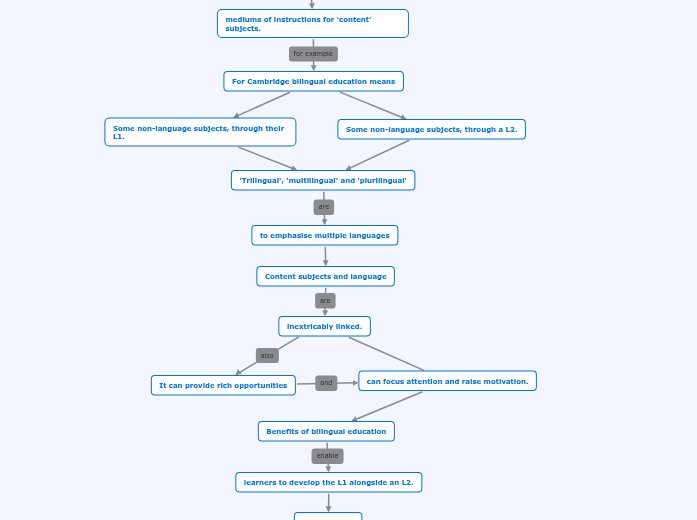作者:Marisol Contreras Arroyo 7 年以前
310
Bilingual learners and bilingual education

作者:Marisol Contreras Arroyo 7 年以前
310

更多类似内容
A 'bilingual' learner
A student who uses their L1 at home and is learning through a L2.
Bilingual education
The use of two or more languages
mediums of instructions for 'content' subjects.
For Cambridge bilingual education means
Some non-language subjects, through a L2.
Some non-language subjects, through their L1.
'Trilingual', 'multilingual' and 'plurilingual'
to emphasise multiple languages
Content subjects and language
inextricably linked.
can focus attention and raise motivation.
Benefits of bilingual education
learners to develop the L1 alongside an L2.
For example:
increased opportunities
improved inter-cultural skills
increased mental flexibility
The challenges of bilingual education
Bilingual education is a complex undertaking
Students need to be supported
Each context is different
Practical tips
Translanguaging techniques
Content and language integrated learning
How can schools start bilingual education?
a bilingual education curriculum model
Clarify their type of school
A long-term training strategy
A language policy
Some people see bilingual education as requiring proficiency in the L2.
People might feel anxious
It can provide rich opportunities
A 'bilingual education' programme
which learn only some subjects through L2.